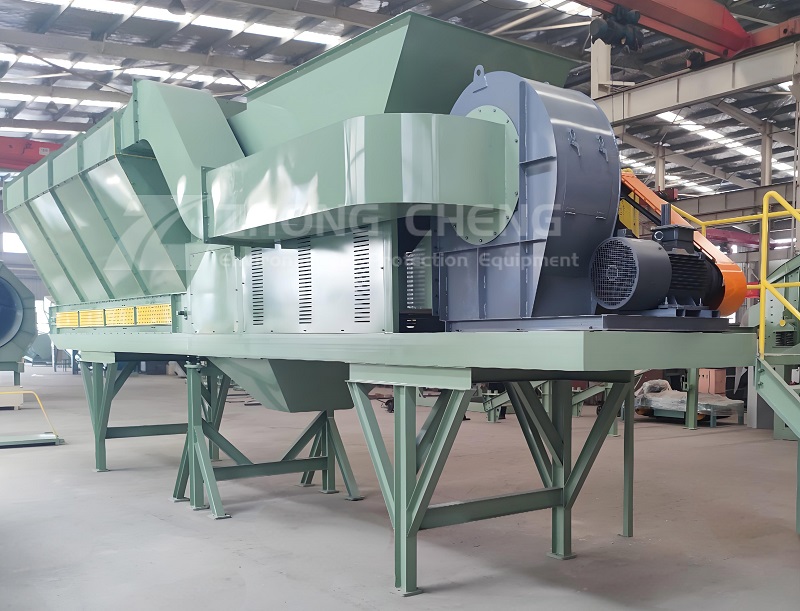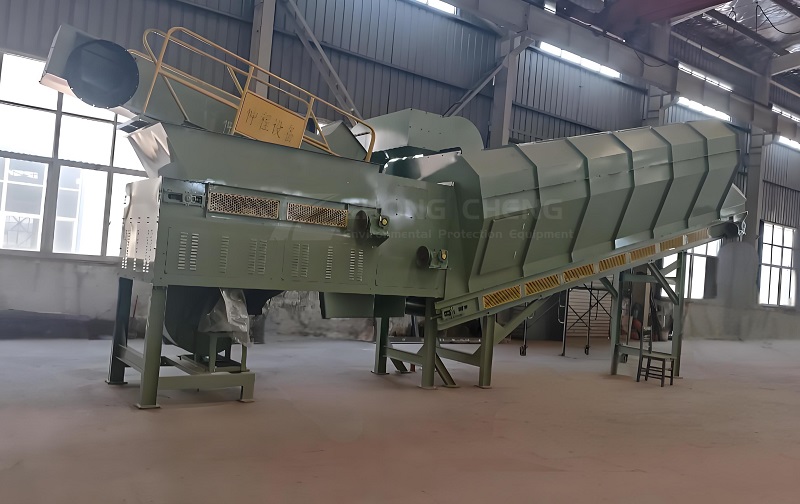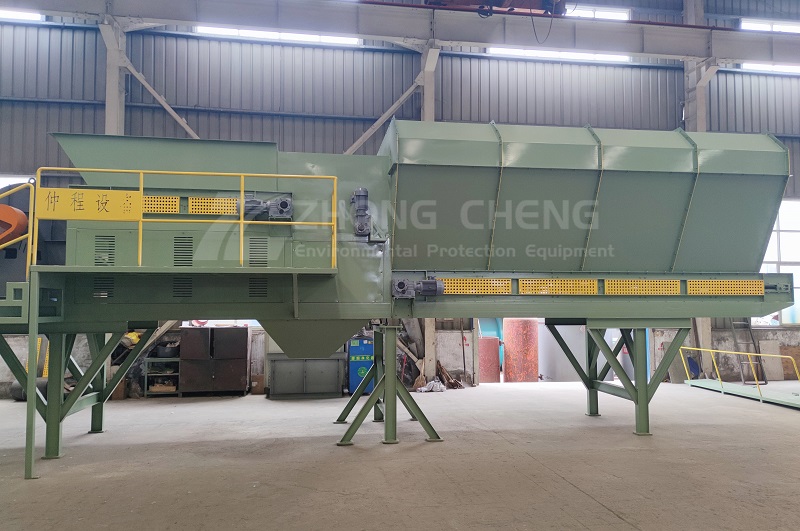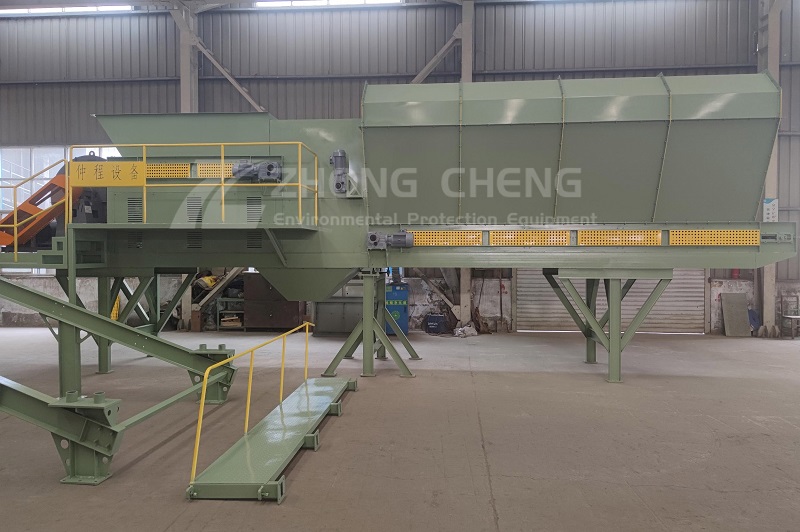Air separators, key equipment that utilizes aerodynamic principles to classify and remove impurities from materials, are widely used in grain processing, ore sorting, and environmentally friendly solid waste treatment. Their operational stability directly impacts production efficiency and material handling quality. Therefore, effective daily maintenance and timely repairs are crucial for extending equipment life and reducing the risk of failure. The following details air separator maintenance and repair methods, focusing on key daily maintenance points, common troubleshooting, and long-term maintenance strategies.
Key Points for Daily Air Separator Maintenance

Daily maintenance should adhere to the principles of "regular inspection, timely cleaning, and lubrication as needed." The recommended frequency is daily pre-shift inspection, weekly comprehensive maintenance, and monthly deep maintenance. The specific procedures are as follows:
1. Daily Inspection of Basic Components
Inspection of the Machine Body and Sealing Structure
Before daily startup, inspect the air separator housing for deformation or cracks. If damage is found, repair it with wear-resistant welding rods (for metal housings) or replace the sealing strips (for plastic/composite housings) to prevent air leakage that can lead to unstable airflow and affect sorting performance. Also, pay special attention to inspecting the gaskets at the feed inlet, discharge port, and air duct connections. If any signs of aging or damage are present, replace them immediately to prevent the ingress of foreign matter or internal air leakage.
Drive System Condition Monitoring

The drive system (motor, belt, coupling) is the core power source for the air separator. Daily inspection should be performed to check for unusual noises and vibrations during operation. Touch the motor casing (when the machine is stopped) to determine if the temperature is normal (not exceeding 60°C during normal operation). Check the belt tension. If the belt is slipping, cracking, or severely worn, adjust the tension or replace it with a similar model. If the coupling bolts are loose, tighten them with a wrench to prevent eccentric rotation that could increase equipment vibration.
Clean the fan blades and air duct
Dust or debris on the fan blade surface can reduce air velocity and sorting accuracy. After weekly shutdown, open the air duct inspection door and use compressed air (pressure 0.4-0.6 MPa) to clean the blade surfaces. If stubborn stains (such as oil or sticky materials) are present, wipe them with a cloth dampened with a neutral detergent to ensure the blade surfaces are free of debris. Also, inspect the blades for deformation or breakage. If the blade edges are worn, repair them by welding or replace them to prevent vibration caused by blade imbalance.
2. Lubrication and Maintenance
The components of the air separator that require lubrication primarily include the motor bearings, transmission bearings, and damper shaft. Lubricate monthly according to the following standards:
Motor bearings: Use lithium-based grease (Type 3#). Open the grease hole in the bearing end cap and inject grease to 1/2-2/3 of the bearing's internal space. After filling, rotate the motor shaft to ensure even distribution of the grease and prevent bearing wear due to insufficient lubrication.
Transmission bearings: For rolling bearings, also use Type 3# lithium-based grease and replace them quarterly. For sliding bearings, add Type 46 machine oil. Check the oil level weekly and refill promptly if it falls below the lower limit.
Damper shaft adjustment: Apply a small amount of grease weekly to the contact area between the shaft and the bracket to reduce rotational friction, ensure flexible adjustment of the damper angle (0-90°), and prevent airflow control failure due to sticking.
3. Safety Inspection
During routine maintenance, pay attention to safety devices: Check that the equipment's emergency stop button is sensitive and immediately shuts off the power supply when pressed; check that guardrails and protective covers are intact and, if damaged, promptly repair them to prevent operators from coming into contact with moving parts; check that electrical wiring is aging or damaged, and that wiring terminals are securely fastened to prevent safety accidents caused by leakage or short circuits.
Common Troubleshooting Methods for Air Separators

During operation, air separators are prone to abnormal air speed, decreased sorting accuracy, and motor failure. The cause must be accurately identified and repair measures implemented based on the symptoms. The details are as follows:
1. Decreased Air Speed or No Airflow
Causes: Severe dust accumulation or deformation of the fan blades, resulting in insufficient air volume;
Blockage in the fan duct or duct, obstructing airflow;
Reduced motor speed (e.g., motor phase loss or belt slippage);
Improper damper adjustment, with the opening angle too small. Repair Procedure: First, shut down the machine and inspect the blades. Clean or repair them, then restart the machine and test again. If the air speed still does not improve, open the air duct and duct access ports and clear any clogged material (such as impurities in the grain or ore fragments). Use a dredging rod as needed. Check the motor's operating status and measure the three-phase voltage with a multimeter. If a phase is missing, troubleshoot the circuit wiring. Check the belt drive and adjust the tension or replace the belt. Adjust the damper to an appropriate angle (depending on the material characteristics, typically 30-60°). Measure the air velocity in the air duct with an anemometer to ensure it meets the rated air velocity (generally 8-15 m/s).
2. Decreased Sorting Accuracy
Causes: Improper air volume adjustment (too high causes light materials to carry heavy materials with them, too low causes heavy materials to mix with light materials); Uneven feed rate, exceeding the equipment's processing capacity; Deformed guide plates inside the sorting chamber, disrupting airflow distribution; Clogged or damaged screens (if equipped with a screening function), resulting in classification failure.
Repair Procedures
Use an anemometer to measure the wind speed in different areas of the sorting chamber. Adjust the dampers to maintain a stable air volume within a reasonable range. Observe the material sorting performance and gradually optimize the wind speed.
Inspect the feeding device (e.g., feeder). If the feed rate fluctuates significantly, adjust the feeder speed or install a stabilizing device to ensure even material delivery to the sorting chamber.
Open the inspection door of the sorting chamber and check for deformation of the deflector. If bent, use tools to correct it to ensure even airflow distribution along the deflector.
If the equipment has a screen, clear any obstructions. Repair damaged areas with screen glue or replace the screen to ensure the screen aperture meets sorting requirements.
3. Motor Repair
Severe Motor Overheating
Causes: Excessive load (e.g., material blockage causing the fan blades to stick), insufficient bearing lubrication, or a short circuit in the motor winding.
Repair: Clear the obstruction and reduce the motor load; add or replace the grease; measure the winding resistance with a multimeter. If a short circuit is detected, disassemble the motor and repair the winding or replace the stator. Motor Failure to Start
Causes: Power failure (e.g., power outage, circuit breaker), motor winding burnout, emergency stop button not reset.
Repair: Check the power line and restore power; measure the winding insulation resistance. If burned, replace the motor; check the emergency stop button, press the reset button, and restart.
4. Equipment Vibration and Abnormal Noise
Causes: Unbalanced fan blades (deformation, uneven dust accumulation); Loose transmission components (loose pulleys, coupling bolts); Severe bearing wear, excessive radial clearance; Uneven equipment installation, loose frame anchor bolts.
Repair Steps: Clean the fan blade surface, repair deformed blades, and replace the fan blade if wear is severe; Tighten the pulley and coupling bolts, and adjust the pulley parallelism to prevent belt deviation; Remove the bearing and inspect for wear. If the ball bearing or raceway is scratched or peeling, replace the bearing with a similar model; Use a level to check the levelness of the equipment frame and adjust the anchor bolts to ensure smooth operation.
Long-term Maintenance and Fault Prevention Strategies for Air Separators

In addition to routine maintenance and troubleshooting, long-term maintenance requires a plan based on equipment usage frequency and material characteristics to mitigate root causes:
1. Regular Comprehensive Overhaul (six months)
Disassemble the air duct and separation chamber, thoroughly clean any accumulated dust and residual material, and inspect the inner walls for wear. If wear is severe (e.g., the metal casing thickness has decreased by 1/3), apply a wear-resistant coating (such as ceramic coating).
Inspect the motor insulation performance. Use an insulation resistance meter to measure the winding-to-ground insulation resistance. It should be no less than 0.5 MΩ. If it is below the standard, dry it out.
Replace worn seals, belts, bearings, and other vulnerable parts to prevent cascading failures caused by aging components.
Calibrate anemometers, ammeters, and other testing instruments to ensure accurate monitoring of equipment operating parameters.
2. Optimize Material Pretreatment
Based on the characteristics of the material being processed by the air separator (such as moisture, particle size, and viscosity), add pretreatment steps before feeding:
If the material moisture is high (e.g., grain moisture exceeding 15%), install drying equipment to prevent material agglomeration and clogging the air duct.
If the material contains large impurities (e.g., large rocks in ore), install a screen or crusher at the feed inlet to prevent large impurities from hitting the impellers and clogging the pipes.
If the material is highly viscous (e.g., organic fertilizer, plastic pellets), install an anti-stick coating (e.g., PTFE) in the sorting chamber to reduce material adhesion.
3. Operator Training
Develop a "Wind Separator Operation and Maintenance Manual" and provide operator training to ensure they master the following skills:
Proper startup and shutdown procedures (pre-startup inspection, 5-minute no-load operation after startup, and material cleaning before shutdown);
Identify common fault symptoms (such as abnormal noise, vibration, and poor sorting performance) and be able to perform simple emergency procedures;
Standardize the recording of equipment operating data (such as operating time, motor temperature, air speed, and feed rate) to facilitate tracing the cause of the fault.
4. Spare Parts Management
Establish an inventory of consumable parts for the wind separator, including belts, bearings, gaskets, impellers, and grease. Ensure that the spare part model matches the equipment and that the inventory quantity meets emergency replacement needs (e.g., maintain a reserve of 2-3 sets of critical parts) to avoid extended equipment downtime due to spare part shortages.
Repair and routine maintenance of the wind separator is a systematic process, requiring a customized plan based on the equipment structure, operating environment, and material characteristics. By strictly implementing daily inspections, standardizing lubrication and maintenance, and promptly addressing any faults, you can effectively improve equipment operational stability and extend its service life (typically from 3-5 years to 6-8 years), while also ensuring production efficiency and sorting quality. In practice, it's important to prioritize prevention over maintenance, integrating maintenance into daily production processes to reduce the risk of equipment failure and create higher economic benefits for the company.
Save Time! Get A Detailed Quotation Quickly.
